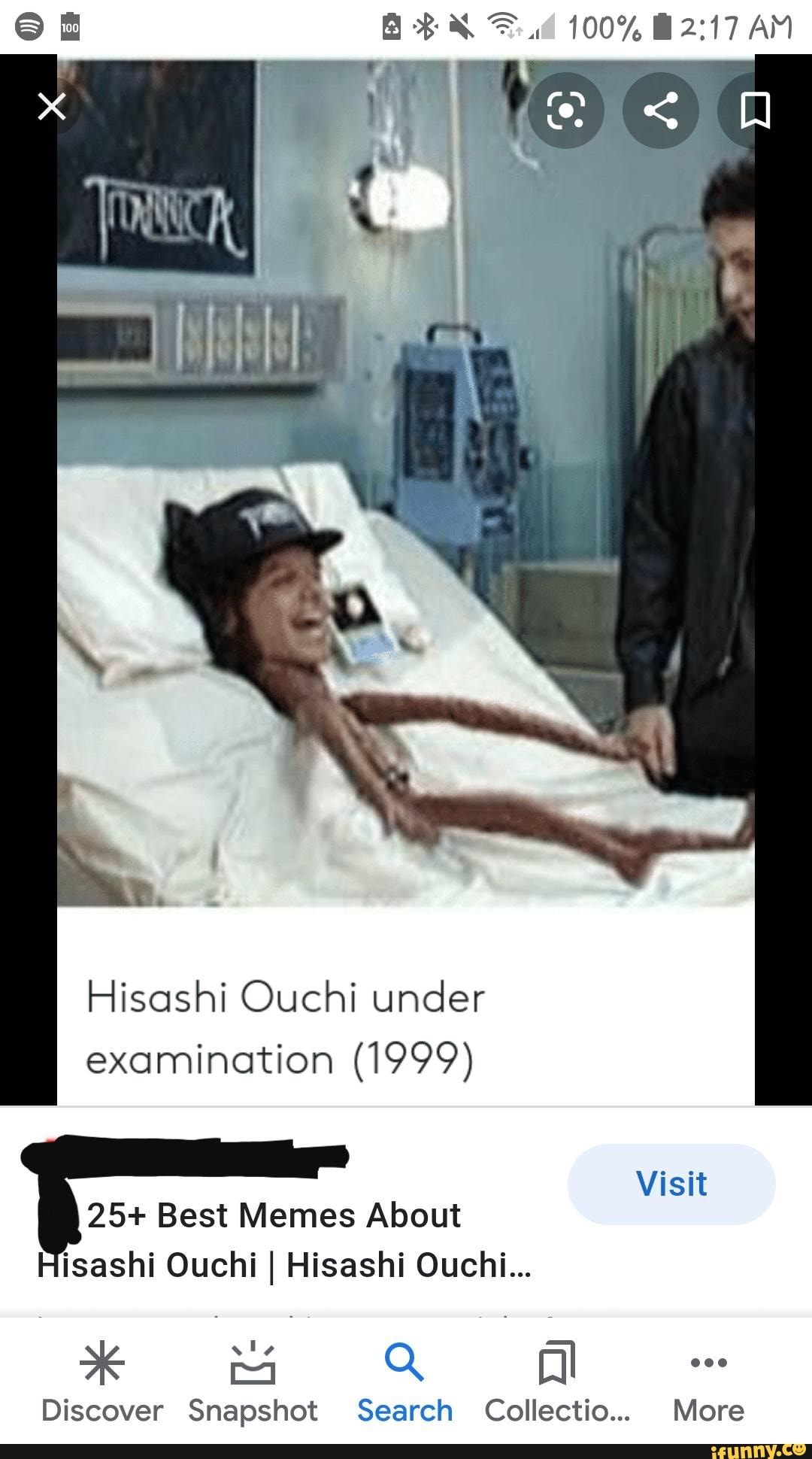Unraveling The Tragic Story Of Hisashi Ouchi: A Tale Of Human Endurance
Hisashi Ouchi's story is one that evokes a profound sense of empathy and sorrow. As a young nuclear technician, he became a victim of one of the worst nuclear accidents in history. The catastrophic events that unfolded on September 30, 1999, at the Tokaimura nuclear facility in Japan not only altered his life but also highlighted the severe consequences of safety negligence in high-risk industries. Hisashi's struggle for survival in the aftermath of the accident has left an indelible mark on society and serves as a chilling reminder of the fragility of human life when faced with technological failures.
In the wake of the incident, Hisashi Ouchi became a symbol of resilience and suffering, capturing the attention of both the media and the public. His case raised critical questions about the safety protocols in place in nuclear facilities and the ethical responsibilities of corporations and governments towards their workers. As we delve deeper into Hisashi Ouchi's life and the events that transpired, we also examine the impact of his ordeal on nuclear policy and public perception of nuclear energy. The lessons learned from his tragic experience continue to resonate today, making it imperative to remember his story.
As we explore the life of Hisashi Ouchi, we will uncover the details of the accident, the medical and ethical dilemmas that followed, and how his legacy has influenced nuclear safety regulations. Hisashi Ouchi's journey is not just a tale of tragedy; it is a testament to the human spirit's capacity to endure and the need for accountability in industries that pose significant risks to human life.
What Led to the Accident Involving Hisashi Ouchi?
The incident that ultimately led to Hisashi Ouchi's suffering began with a series of critical errors at the Tokaimura nuclear facility. On that fateful day, workers were attempting to produce a uranium solution for a nuclear reactor. However, miscalculations in the amount of uranium used resulted in an uncontrolled nuclear chain reaction, releasing a massive dose of radiation into the environment.
Who Was Hisashi Ouchi Before the Incident?
Prior to the accident, Hisashi Ouchi was a dedicated worker with aspirations of advancing in the nuclear field. His education and training provided him with the technical knowledge necessary to perform his duties, but the tragic events that unfolded would forever alter his life and legacy.
| Personal Details | Bio Data |
|---|---|
| Name: | Hisashi Ouchi |
| Date of Birth: | February 6, 1961 |
| Nationality: | Japanese |
| Occupation: | Nuclear Technician |
| Incident Date: | September 30, 1999 |
| Location: | Tokaimura, Japan |
| Status: | Deceased (March 2000) |
What Were the Immediate Consequences of the Tokaimura Accident?
The immediate aftermath of the Tokaimura incident was devastating. Hisashi Ouchi and two other workers were exposed to lethal doses of radiation. Ouchi received approximately 17 sieverts of radiation, a level that far exceeds the lethal dose for humans. Following the accident, Ouchi was rushed to a hospital where he underwent intensive treatment.
How Did Hisashi Ouchi's Health Decline?
Hisashi Ouchi's health deteriorated rapidly in the days following the accident. Despite the best efforts of medical professionals, the effects of radiation poisoning became increasingly apparent. He suffered from severe burns, organ failure, and a host of other complications, leading to a harrowing battle for survival.
What Ethical Dilemmas Arose During Hisashi Ouchi's Treatment?
The medical treatment of Hisashi Ouchi raised significant ethical questions. As his condition worsened, the decision to continue treatment became a contentious topic. Medical professionals faced the dilemma of prolonging his suffering versus allowing him to die with dignity. This situation sparked debates about the ethics of treatment in cases of extreme suffering caused by industrial accidents.
What Impact Did Hisashi Ouchi's Case Have on Nuclear Policy?
Hisashi Ouchi's tragic experience had far-reaching implications for nuclear policy in Japan and worldwide. The incident prompted a thorough investigation into the safety protocols at nuclear facilities, leading to significant changes in regulations and oversight. The public outcry following the accident emphasized the need for transparency and accountability in the nuclear industry.
How Is Hisashi Ouchi Remembered Today?
Today, Hisashi Ouchi is remembered not only as a victim of a tragic accident but also as a catalyst for change in nuclear safety protocols. His story serves as a poignant reminder of the human cost associated with industrial negligence and the need for stringent safety measures to protect workers in high-risk environments.
What Lessons Can Be Learned from Hisashi Ouchi's Experience?
- Importance of Safety Protocols: The incident highlights the critical need for strict adherence to safety protocols in nuclear facilities.
- Ethical Responsibility: The case emphasizes the ethical obligations that corporations have towards their employees, particularly in hazardous industries.
- Public Awareness: Hisashi Ouchi's story has raised public awareness about the risks associated with nuclear energy and the importance of regulatory oversight.
- Advocacy for Worker Rights: Hisashi's ordeal has become a rallying point for advocates seeking better protections for workers in dangerous occupations.
In conclusion, the story of Hisashi Ouchi is one that encapsulates both tragedy and hope. His battle against the aftermath of the Tokaimura accident has not only shaped nuclear policy but has also highlighted the importance of human compassion and ethical responsibility in the face of technological advancement. As we reflect on his life and legacy, we are reminded of the profound impact that one individual's experience can have on society as a whole.
Sza Erome: The Rise Of A Phenomenal Artist
Exploring The World Of 5movierulz.be: Your Gateway To Cinematic Delights
Larry Ellison's Spouse: A Journey Through Love And Life


